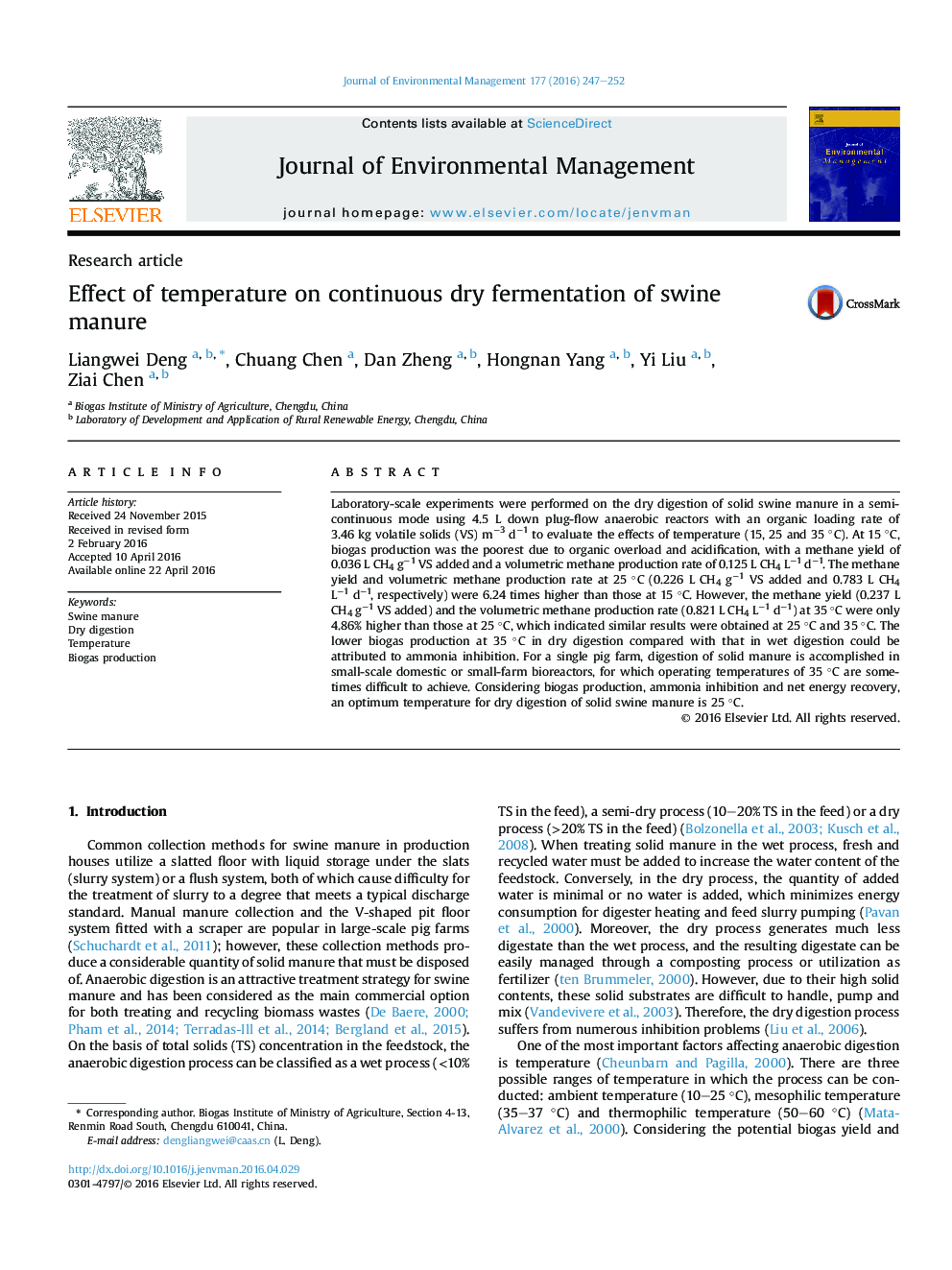| Article ID | Journal | Published Year | Pages | File Type |
|---|---|---|---|---|
| 7480422 | Journal of Environmental Management | 2016 | 6 Pages |
Abstract
Laboratory-scale experiments were performed on the dry digestion of solid swine manure in a semi-continuous mode using 4.5 L down plug-flow anaerobic reactors with an organic loading rate of 3.46 kg volatile solids (VS) mâ3 dâ1 to evaluate the effects of temperature (15, 25 and 35 °C). At 15 °C, biogas production was the poorest due to organic overload and acidification, with a methane yield of 0.036 L CH4 gâ1 VS added and a volumetric methane production rate of 0.125 L CH4 Lâ1 dâ1. The methane yield and volumetric methane production rate at 25 °C (0.226 L CH4 gâ1 VS added and 0.783 L CH4 Lâ1 dâ1, respectively) were 6.24 times higher than those at 15 °C. However, the methane yield (0.237 L CH4 gâ1 VS added) and the volumetric methane production rate (0.821 L CH4 Lâ1 dâ1) at 35 °C were only 4.86% higher than those at 25 °C, which indicated similar results were obtained at 25 °C and 35 °C. The lower biogas production at 35 °C in dry digestion compared with that in wet digestion could be attributed to ammonia inhibition. For a single pig farm, digestion of solid manure is accomplished in small-scale domestic or small-farm bioreactors, for which operating temperatures of 35 °C are sometimes difficult to achieve. Considering biogas production, ammonia inhibition and net energy recovery, an optimum temperature for dry digestion of solid swine manure is 25 °C.
Related Topics
Physical Sciences and Engineering
Energy
Renewable Energy, Sustainability and the Environment
Authors
Liangwei Deng, Chuang Chen, Dan Zheng, Hongnan Yang, Yi Liu, Ziai Chen,
